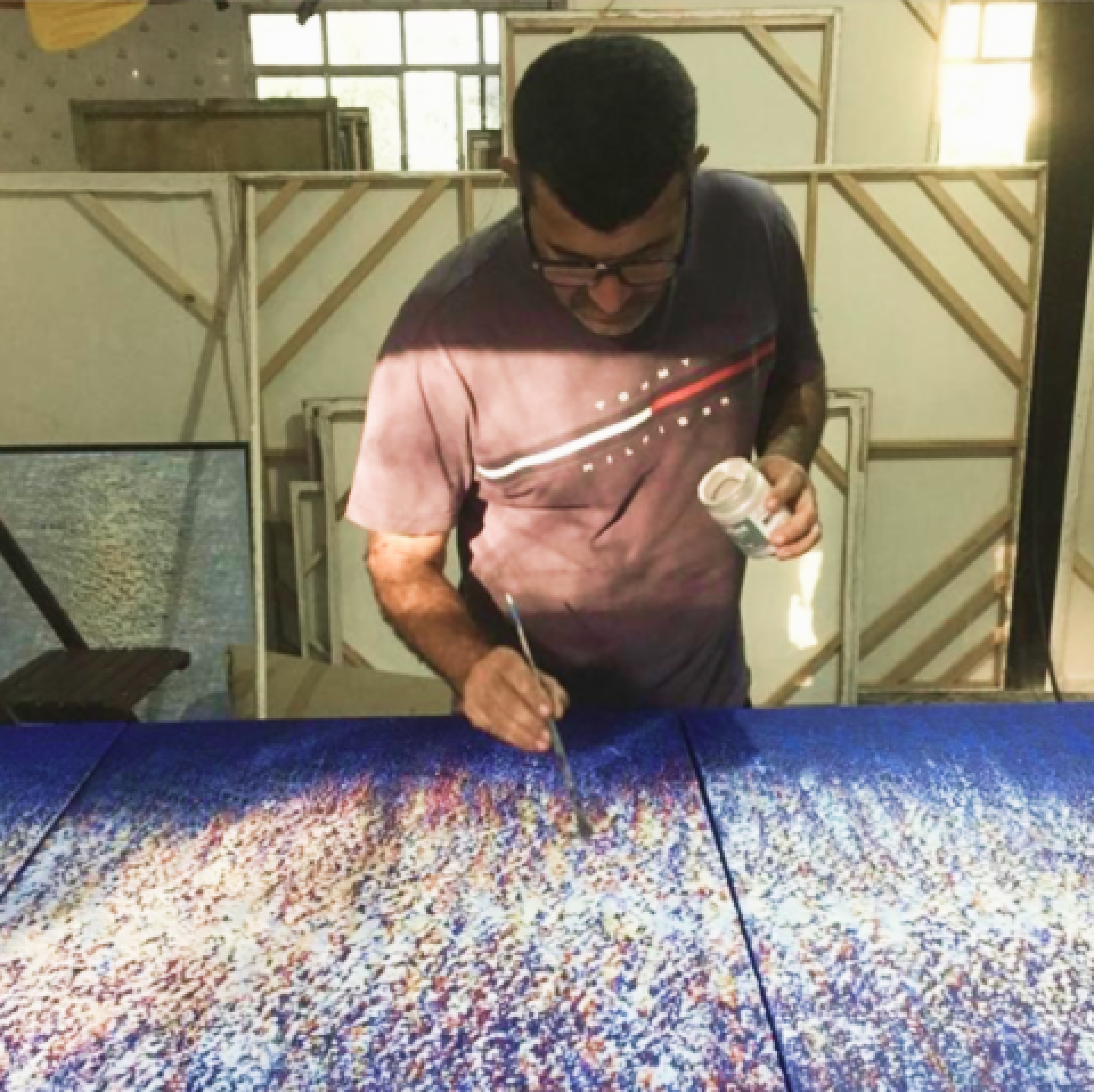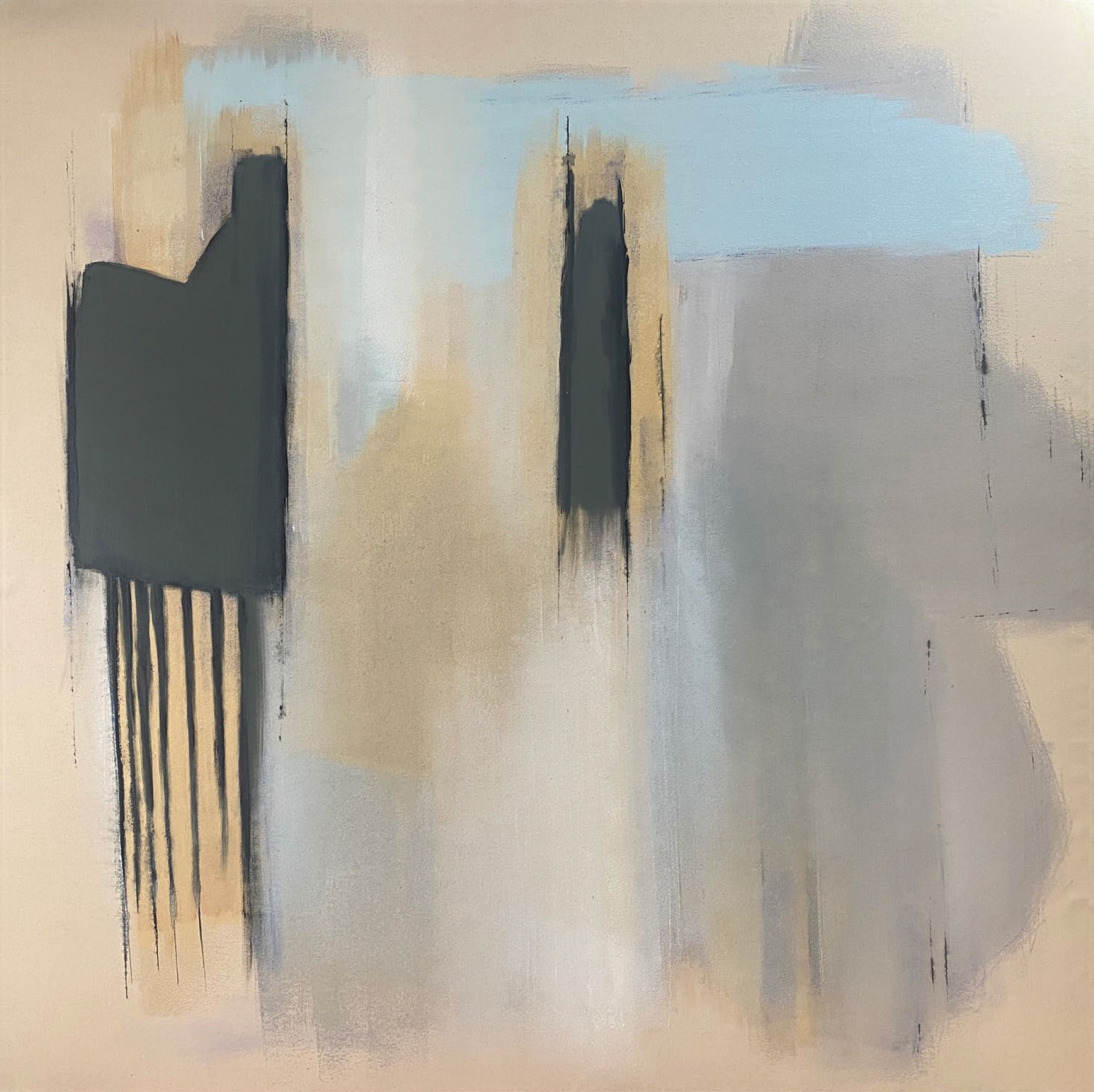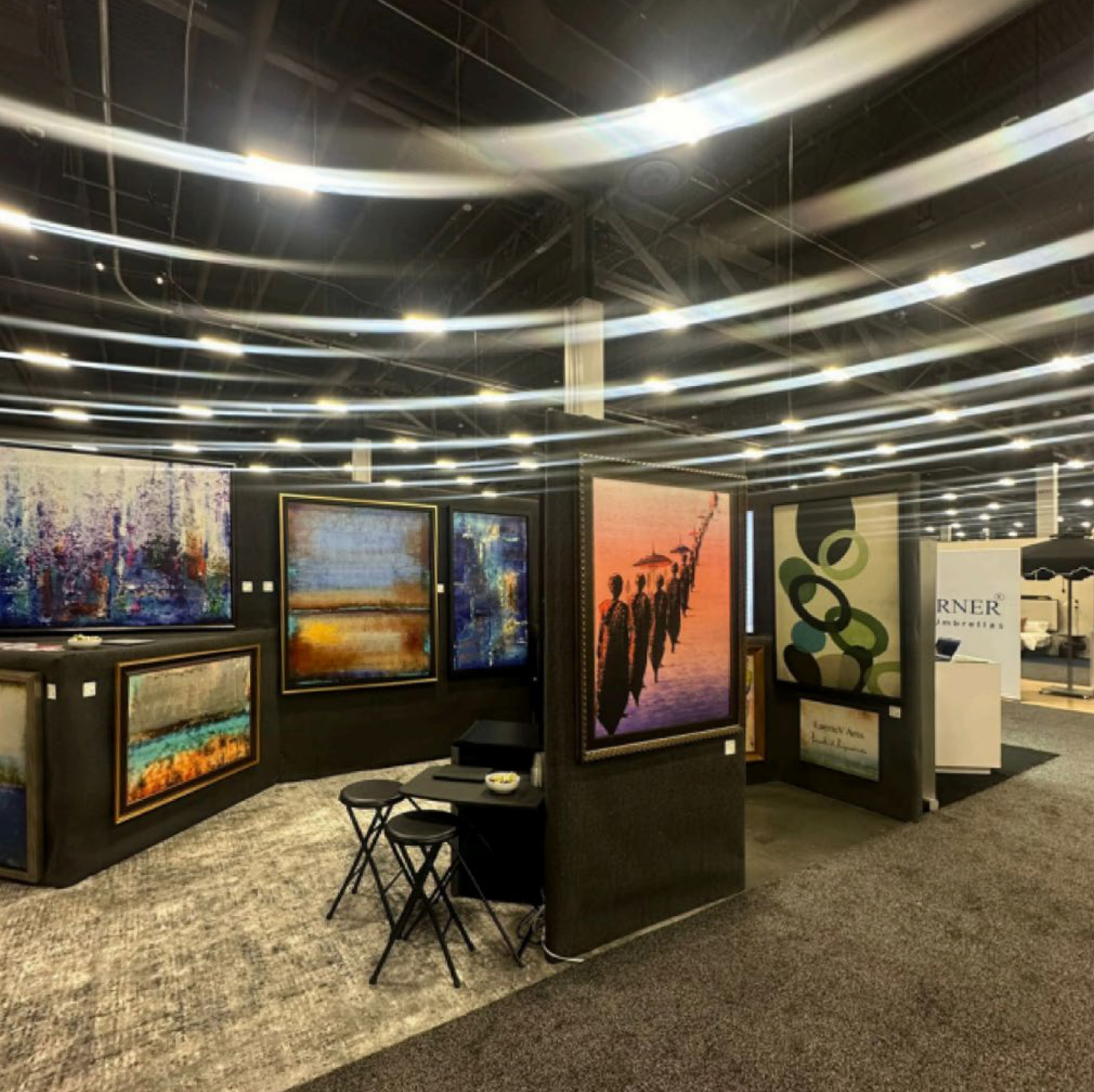From Quiet Rebellion to Artistic Freedom
By the age of 19, LaerteV had created a life that defied the machismo ingrained in his culture. Moving from the confines of the military base to a nearby town, he became the heart of a new family—raising both his biological children and four adopted ones with love and care. His life was a quiet, yet powerful rebellion, dedicated to nurturing and fatherhood.
Amidst the strict controls of the regime, LaerteV sold his art in secret, offering his pieces in tourist areas and flea markets. But as Brazil began to break free from dictatorship in the mid-1980s, LaerteV’s work found more room to breathe. The newfound artistic freedom allowed him to delve into abstract and innovative forms of expression, earning him broader recognition.
By the early 1990s, when street fairs and flea markets became legalized, LaerteV was able to publicly exhibit his art for the first time. At 25, he won a prestigious painting contest, which led to his first major exhibition—ironically held at the military base that had once symbolized restriction in his life. Soon after, his art caught the eye of Brazil's decorative arts scene, becoming highly sought after by luxury designers and collectors alike.




